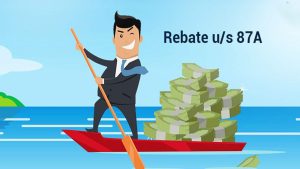Leave Encashment Tax – The company provides paid leave to all employees, although not all leaves are available to the employee during the period of work. You should, therefore, encash some leaves which you’ve been meant to be paid but did not receive. Leave encashment also is such payout given by the boss to the employee in order for the employee to reap the benefits of unpaid leaves. You must take note of the fact that leave encashment is not tax-free; nevertheless, the Income Tax Department has granted an exception of a few amounts under section 10. (10AA).
Salaried employees in the public and private sectors, on the other hand, receive almost equivalent salaries, payroll exemptions, and vacation time. When an employee’s taxable salary rises the income tax department’s recommended cap, they must pay income tax. The employer subtracts a portion of the employee’s pay and invests it in the employee’s provident fund (PF) account. The employee has exposure to the provident funds during their jobs and when they leave. During the employee’s working time, the company also provides benefits and allowances such as transport, food, and accommodation.
Must Read – What is Section 80TTB?
What is Leave Encashment Tax?

Leave encashment is a leave carry-over method offered by the company to its employees, and it can be taken on the employee’s remaining vacation time. Since these leaves are credited annually, the employee may request encashment at the moment of their dismissal or retirement. The company maintains track of the employee’s used and unused paid leave, as well as the balance at the end of the work term. In the encashment procedure, the employee will earn a day’s pay on each paid leave day. This procedure applies to any person who works for the company.
During the period of employment.
Any employee who requests leave encashment for accrued compensated time off during their work term is subject to taxation and it is called wage gain. In this situation, the employee could be eligible for Section 89 tax relief. The employee may seek tax exemption from the balance collected through the leave encashment procedure under Section 89. Form 10E must be filed by the employee in order to obtain tax relief for leave encashment. This questionnaire is readily accessible on the IRS’s e-portal and can be filled out and uploaded online until completed. Just income tax from a wage would be charged during the encashment.
Following retiring or resigning.
Employees may take advantage of encashment from their deferred paid leave as they retire or withdraw. That being said, based on the types of companies that the employee has served, different requirements apply.
- When an individual has worked with the central or state government, they are entitled to a full refund on their paid leave, as well as a complete tax exemption.
- If an employee dies before their leave encashment, their legitimate heirs will receive the entire leave encashment on their behalf. They will not be charged any income tax on the money they earn.
Employees in the private sector may be eligible for paid leave encashment when they retire or resign. For leave encashment, the permissible tax exemption number is Rs 3,00,000; however, any amount above this sum is taxable. Section 10 calculates the amount of exempt leave that can be redeemed (10AA).
Tax Exemption Under Section 10(10AA)
In this scenario, the following aspects are taken into account in order to qualify for the section 10 exemption (10AA).
- The sum of leave encashment that was already issued is taken into consideration.
- The monthly wage for a period of ten months. The base pay is supplemented by dearness deductions. The commission earned is therefore taken into account. The pay of ten months is based on the salary earned in the ten months leading up to their retirement or resignation.
- So if the person has accrued a large number of leaves in a year, the company will only allow encashment for a limit of 30 days per year. It states that the cumulative amount of paid leaves will be determined during the retirement or dismissal period, and afterward the encashment would be handled accordingly. Except if an individual has not used any of his or her paid leaves and they total 45 days, the company will only accept 30 days of paid leave for encashment only at the period of termination or retirement.
- In the event of leave encashment mostly during the work period, the amount earned is fully taxable in all ways. However, under Section 89 of the Income Tax Act, the employee can demand tax benefits on the balance of their leave encashment.
- Employees who retired after 1998 are entitled to a cumulative cap of Rs. 3, 00,000 to be provided, as defined by the government. When the real payment to be paid exceeds Rs. 3, 00,000, the encashment sum is Rs. 3, 00,000, and the excess sum is received in the payment account, which is taxable. This situation mostly refers to non-government workers.
- At the period of leave encashment, the legitimate heirs of deceased workers will collect the balance without any tax deduction.
- In the event of dismissal or firing, all government and non-government employees are required to pay tax on the money accrued from paid leave encashment since the sum is deemed revenue from compensation by the income tax department at the moment. The tax rate to be collected is the same now as is for salary income tax.
As a result, the leave encashment method is entirely straightforward and simple for workers to use before or during their work time. The Indian government has enacted the Labour Act, which requires workers to have equal treatment, leave, and pay. Any employee is subject to the same leave encashment scheme. This encashment sum may also be used for vital purposes such as childcare, schooling for their children, and personal savings. Given the cost of inflation, the leave encashment will be issued either before or after the work period. The employee has the choice of receiving a lump sum or in installments. The employee has the choice of receiving a lump sum or in installments. Employees can schedule their tax returns appropriately if the number is high.



